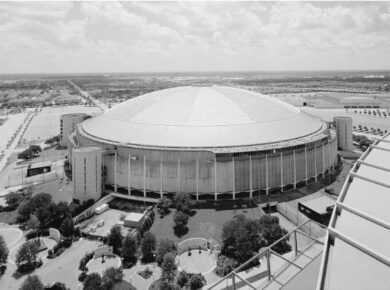With the extensive list of acclaimed alumni of his firm, OMA, it is not a stretch to call Rem Koolhaas (born 17 November 1944) the godfather of contemporary architecture. Equal parts theorist and designer, over his 40-year career Koolhaas has revolutionized the way architects look at program and interaction of space, and today continues to design buildings that push the capabilities of architecture to new places.

Photo: © Courtesy of OMA / Photography by Fred Ernst
As a building architect, Koolhaas made his international breakthrough in 1992 with the construction of the Kunsthal in which the firm profiled itself in those early years were the 1987 Nederlands Danstheater in The Hague and the Rotterdam bus terminal. From the 1990s onwards, the office has been particularly active internationally, including in France, the United States and Japan.

Photo: © OMA
In Beijing, Koolhaas collaborated with German architect Ole Scheeren on the CCTV buildings in 2006. The CCTV tower was built for the 2008 Olympics, but was not completed until 2012. It consists of two towers connected both upstairs and downstairs. Its floor area is 575,000 m².

Photo: © OMA
Some critics have called Koolhaas “the most controversial figure in architecture” and “an anti-architect,” but those descriptions fail to capture the career of a man who is always chasing the next step in architecture and how he can think bigger.

Photo: © OMA by Chris Stowers
By helping to spawn the careers of Bjarke Ingels, Ole Scheeren, Farshid Moussavi, Jeanne Gang, Winy Maas, and many many others, Koolhaas has perhaps found another way of thinking bigger: by creating the future.

Photo: OMA + LMN © Philippe Ruault
In 2000, he won the Pritzker Prize, and in 2004 the Royal Gold Medal from the RIBA. In 2014, he curated the Biennale di Venezia and became a member of the American Philosophical Society.
About the Author:

Bruno Dursin – Managing Director at Believe in Steel. Bruno has more than 30 years of experience in promoting steel & steel solutions. His clients benefit from his extensive network within the building industry.



